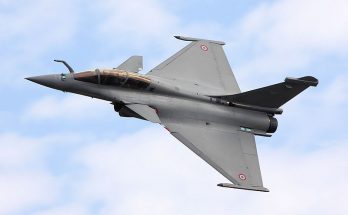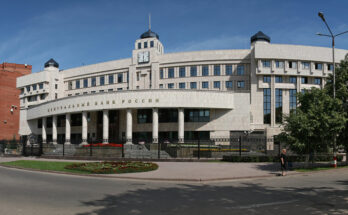
Europe has been dealing with a case of whiplash since the start of the second Trump administration, as President Donald Trump aims to rewrite the nature of U.S.-Europe relations. Since returning to the White House, President Trump has rolled out several tariff adjustments impacting trade with Europe, while simultaneously shaking up the security landscape by pursuing rapprochement with Russia and vociferously criticizing the NATO Alliance. Alarmed at the rapid pace of change, Europe’s governments have stepped up funding for their militaries, hoping to reverse capability declines and build a new European security architecture that can look after itself.
In February, the White House announced that tariffs on steel would be restored to 25 percent, while levies on aluminum will be raised to the same level. These adjustments will impact around €26 billion ($29.4 billion) in E.U. exports to U.S., the European Commission assessed, prompting a European response hitting $28 billion in American exports. Weeks later, on April 2, President Trump unveiled his new wide-ranging ‘Liberation Day’ duties, raising the standard tariff on the E.U. to 20 percent. Levies on British goods jumped to 10 percent.
The budding trade war is creating yet another headwind for the European continent, whose economy writ large is already in a funk. Economic growth rebounded after the pandemic-related business and travel restrictions, but the experience was short-lived as supply chain shocks prompted prices to explode. Moreover, Russia’s invasion of Ukraine, begun in 2022, further stoked inflation and put the continent’s reliance on Russian energy in sharp relief. Trade disruption will hurt European exports to the U.S., and could result in Europe being flooded with cheap materials and consumer products from China as trade reroutes away from the United States. That would provide a real challenge for European companies to compete with.
In mid-March, the European Central Bank (ECB) estimated that real GDP growth in the euro area would amount to only 0.9 percent in 2025, and from there only slightly faster in 2026 and 2027. The Bank of England (BOE), meanwhile, cut its growth expectation for the British economy this year in half, to 0.75 percent. The muted economic outlook comes despite heavy government spending – E.U. members are on average running annual fiscal deficits of around 3.5 percent of GDP – and neither the ECB nor the BOE estimate takes into account the April 2 tariffs, which for now have been put to 90-day pause pending the outcome of trade negotiations.
That European governments are already grappling with slow economies and large fiscal imbalances makes for a challenging environment in which to continue beefing up defense budgets – even though there remains a strong imperative to do so.
Suggestions from the White House that the U.S. will at a minimum downsize its security commitment to the continent has many European capitals, particularly those closest to Russia, worried that the NATO Alliance’s Article 5 mutual self-defense commitment effectively exists no longer. Russia has suffered significant losses in Ukraine, but, having converted its economy to a war footing, its pace of rearmament could enable the Russian military to perform offensive actions against NATO’s eastern members as soon as within a few years, according to some European intelligence assessments.
Europe’s militaries would be hard-pressed to respond to such a Russian invasion scenario without American support, a point emphasized by the European ‘Coalition of the Willing’ being unwilling to deploy peacekeeping troops to a post-war Ukraine absent firm guarantees from Washington that it would back the mission up in the event of a confrontation with Moscow.
Rearmament began in earnest in wake of Russia’s invasion of Ukraine, but it will be a lengthy process undoing decades’ worth of decline in European militaries. E.U. defense spending stood at €326 billion in 2024, up by a third from 2021, and British defense spending adds another £57 billion ($75.5 billion) to the European total. These are not small sums in absolute terms, but amount to only around 2 percent of Europe’s combined economic output. Russia, by contrast, is spending triple that figure as a share of its GDP.
And underneath the topline figures are glaring capability gaps. European militaries are much smaller now than they were during the Cold War and are dependent on the U.S. as a strategic enabler. European armies are in need of everything from howitzers and multiple rocket launchers to warships to missile systems and strategic airlift. Ammunition stockpiles have been depleted in order to provide for Ukraine’s defense, requiring a major build-up in artillery shells and rockets. Russian long-range missile strikes underscore the need for new air-defense equipment, and European defense planners are increasingly looking at adopting their own deep-strike capabilities.
President Trump’s tariffs add an interesting wrinkle to all of this. The darker economic outlook will weigh on defense spending growth, as governments strapped for cash will find it difficult to devote meaningfully more to their militaries without upsetting other fiscal priorities or further running up the debt pile. Equipment imported from abroad will become much more expensive. That is an issue for Europe, for though the continent broadly possesses a strong military industrial base, in practice much of its defense requirements are being met with hardware imported from abroad either because no competent European alternative exists, or European production lines are too small to handle the required volume of work.
Looking at the other side of the coin, however, the tariff war may end up further incentivizing European initiatives to ‘buy European’ in military procurement contracts, thus boosting the local industry – or at least, that is what investors seem to think. Global equities sold off in reaction to the tariff announcements, especially after the April 2 duties, but the Select STOXX Europe Aerospace and Defense exchange-traded fund is still up 41 percent year-to-date (as of the close on April 15), while the SPDR S&P Aerospace and Defense fund tracking mostly American companies is down 1.5 percent on the year. Defense industrial growth, moreover, might help juice European economies, providing a kick that has been sorely lacking.
President Trump loves making high-stakes deals, and thus some of the tariffs announced over the last few months may ultimately be talked down to lower levels. The Trump administration has repeatedly made the case, however, that the 10 percent baseline tariff on all countries will be permanent, and the metals levies look to have staying power, as well. Whatever ultimately shakes out on that end, the tariff episode has reinforced to European capitals the need for ‘strategic autonomy’ on defense – just don’t expect it anytime soon.
Join Forecast International at the Paris Air Show to gain valuable insight into the evolving dynamics of the global defense market. Traditionally regarded as insulated from broader economic fluctuations, the defense sector is now increasingly impacted by global economic forces. Tariffs, trade disputes, and rising economic nationalism are introducing new complexities that affect the stability, cost-efficiency, and resilience of critical defense programs.
For over 50 years, Forecast International has been a trusted authority in aerospace and defense intelligence. Our mission is simple yet vital: to equip industry leaders with the data-driven insight and strategic foresight needed for confident, informed decision-making. Visit us at Hall 3, Booth C164 to learn how our expert analysis can strengthen your planning and elevate your strategy.
Schedule a time to meet with us in Paris.
Military markets analyst, covering Eurasia, Middle East, and Africa.





